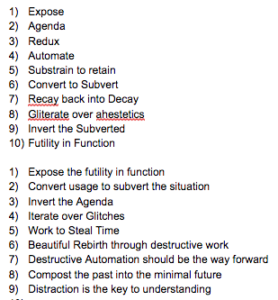Broforce is a game made by Free Lives. Its so full of bro, that even bro’s can’t handle the bro-ness. SO MUCH BRO. But its basically satire about American Foreign Activities, wrapped up in a nice little engine with lots of emergent explosions, and many characters.
Mechanics
Broforce is a classic side scroller game with basic run and jump mechanics and physically based level puzzles. Players have simple controls like “jump”, “shoot”, “special attack”, and “taunt” and they can use these simple controls to kill everything, but also to interact with the environment (shooting through walls, the earth, setting off explosions etc) to try and get through a level. Death is treated like classic arcade death, you have no health bar, if you die, and all your lives are lost, the level starts over from either the beginning or a check point. Your goal on each level is to “liberate the area” which basically means “blow everything up and kill the red devil suited boss figurehead at the end of the level”. Sometimes you will have mid level, or final bosses to the tune of classic arcade games which means the boss has a health bar, but you don’t. Your other goal is to “Free” as many prisoners as possible. The more you free, the more characters you unlock, the more lives you obtain for that level. Broforce has an extensive list of action hero characters. Oh and at the end of the game YOU ACTUALLY FIGHT SATAN as the final boss. Its weirdly Metroid like. One thing I find interesting is that the levels themselves while related are not linearly connected. You basically use a world map to fly around and choose what mission to do. Which is nice, because you don’t have to play things in order. Or like a callback to Super Mario 3, even if you are ready to fight the end boss, you can go back and some extra levels beforehand.
Dynamics
Broforce has a weirdly emergent gameplay. Yes its a shoot everything side scrolling puzzler, but because you can mess with most of the elements in the environment, you can set off all kinds of weird chain reactions. This means you also have an itch to just explore stuff like “I wonder what happens when I put this dynomite on this building’s roof?” or “If I shoot these barrels with a mech, which way will they tip?” Its totally possible to beat levels just by turning the environment on all the npcs, or using it for advantage, and that’s kind of an unexpected level of amusement and sophistication for a shoot all the things side scroller. But be aware, you can also get stuck if you carve out too much of the environment. It some ways it becomes more of a you vs the territory, than you vs the npcs. Which is unexpected. Players don’t really interact too much in game, they mostly interact with one another using loose strategy to clear a level verbally in real life. Its a multiplayer couch strategy game, so Broforce is much more fun with friends.
Aesthetics
Broforce rides a line between fun and insanely frustrating. Its like that same frustrating feeling you get from classic arcade games, or things like Super Meat Boy. Where, even though you might have died trying do a part in a level 10 times, you still want to go back and try it. Its pretty addictive, and while I wouldn’t call it emotionally engaging, but it is very charged, and the dynamic changes when you play it as a local multiplayer, because people really get into it.
Aside
As a side note, the design is hilarious, but also sort of insidious if you think about what’s going on politically state side this year. Suddenly all the joking about “USA USA USA” takes on a very different tone. I like Broforce because its setup as satire. A poking fun of american action hero like stereotypes. But sometimes I wonder about what the next year is going to bring in response to that and how playing this game will feel a year from now.





